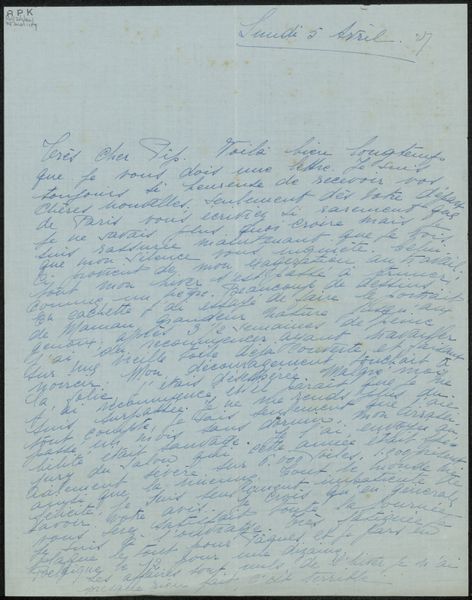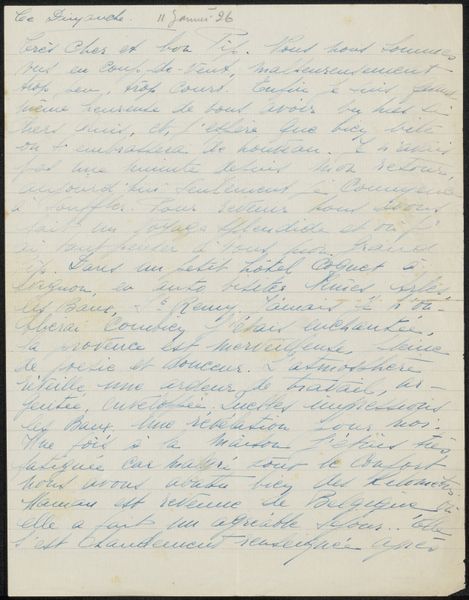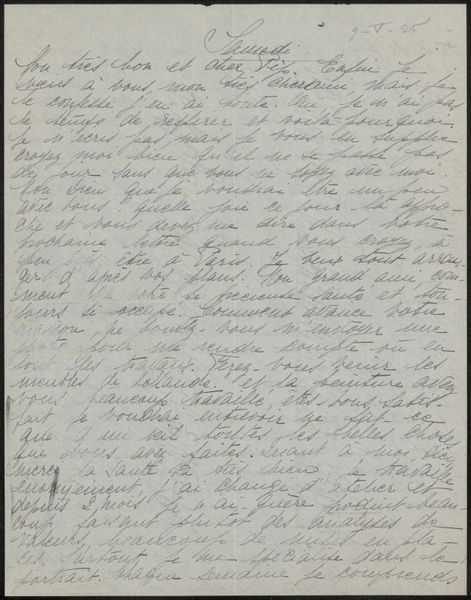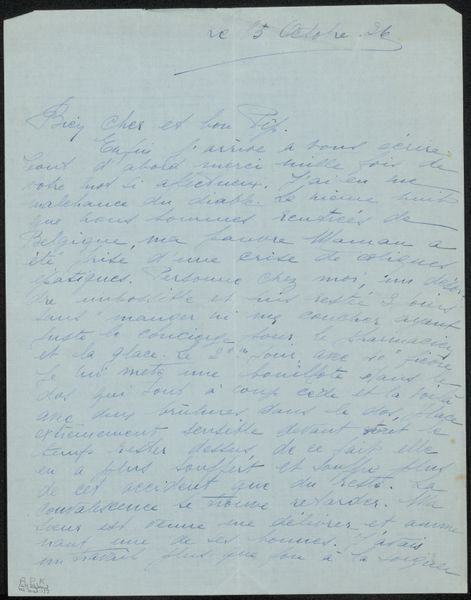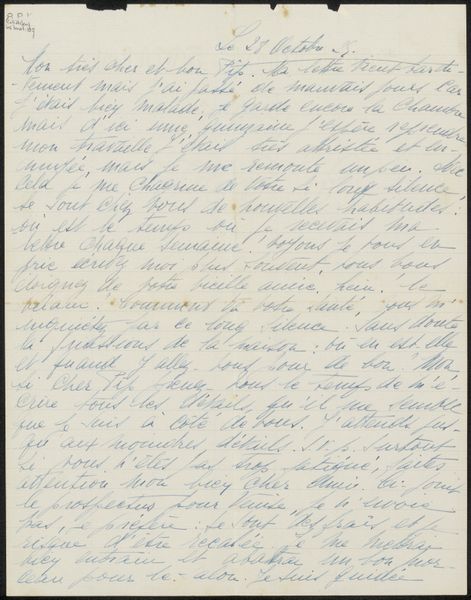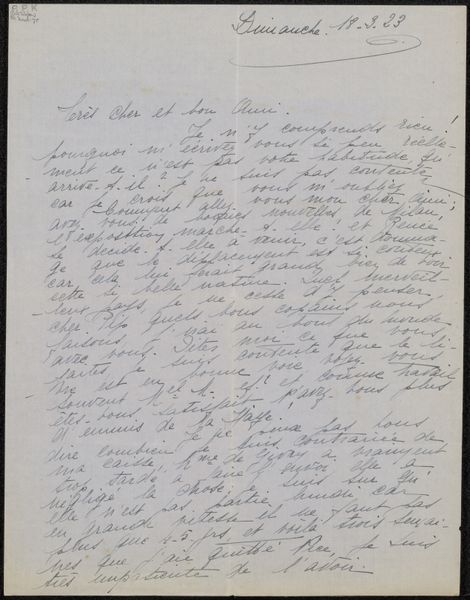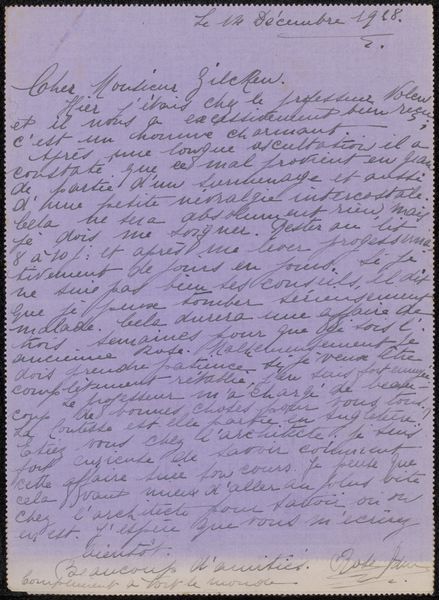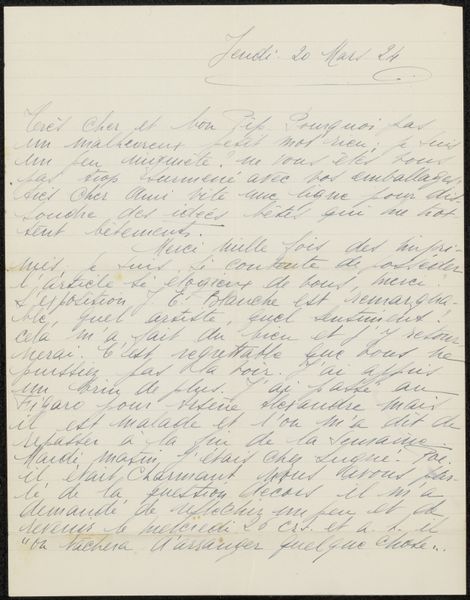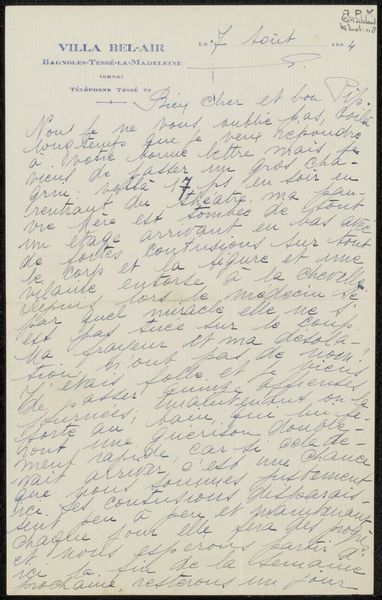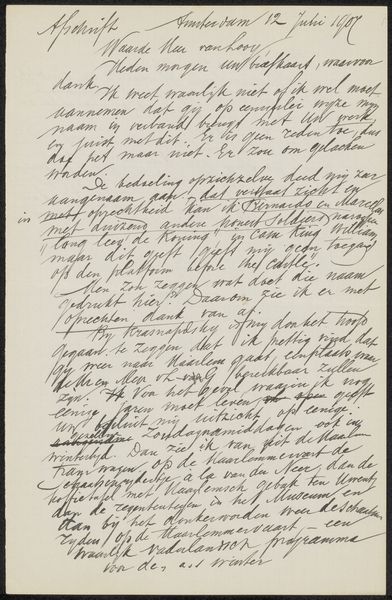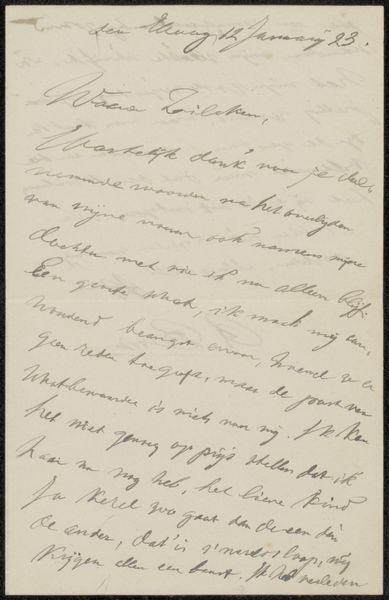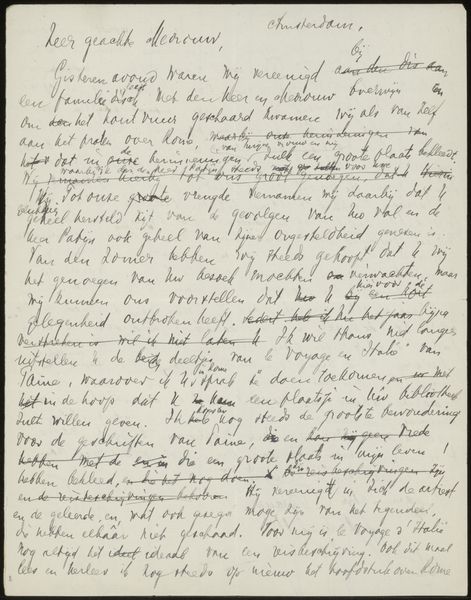
drawing, paper, ink, pen
#
drawing
#
hand-lettering
#
linocut
#
ink paper printed
#
hand drawn type
#
paper
#
ink
#
linocut print
#
hand drawn
#
pen work
#
sketchbook drawing
#
pen
#
sketchbook art
#
coloring book page
#
calligraphy
Copyright: Rijks Museum: Open Domain
Curator: This appears to be a letter, “Brief aan Philip Zilcken,” created sometime between 1911 and 1930. The piece uses pen and ink on paper and incorporates hand-lettering and linocut techniques. It's got an intimate feel to it, almost like we're peeking into someone's personal correspondence. The handwritten text dominates, creating a very immediate, personal connection. What strikes you about it? Editor: Well, besides the obvious beautiful handwriting, it does have an air of intimacy. The script gives the impression that the author wrote in haste, possibly while sitting outside at a cafe somewhere, with the sun on their shoulders. But from a historical perspective, what might a letter like this tell us about the art world at that time? Curator: That’s a great question. Think about it: correspondence networks *were* the art world in many ways. Before the internet, before even widespread photography of artworks, letters facilitated dialogues. They distributed ideas. Zilcken was himself an artist, critic, and a key figure in connecting Dutch and French artistic circles. This letter, beyond its personal content, represents that vital flow of information and influence. What language is it in, do you know? Editor: It looks like French. So, someone in the Dutch art scene corresponding in French points towards an interesting level of cultural exchange and perhaps a specific audience he had in mind? Curator: Exactly! Consider the social status tied to fluency in French during this period – it signified a certain level of education and cosmopolitanism. The choice of language wasn't neutral. The very act of writing in French positions the author within a specific cultural and intellectual landscape. And what kind of public role can art have when private dialogues can determine the discourse in the art world? Editor: It seems like the art world, then, was built upon these personal connections and shared cultural understandings, accessible mainly to those in the know. Curator: Precisely! Seeing this letter as more than just a personal note allows us to understand the social and cultural fabric of the art world at that time. We often reduce art down to galleries and auctions now, but things were often exchanged like this back then. Any final thoughts? Editor: I think it’s fascinating how a seemingly simple letter can open up such a rich understanding of artistic networks and cultural values of the early 20th century. It’s much more than meets the eye.
Comments
No comments
Be the first to comment and join the conversation on the ultimate creative platform.
